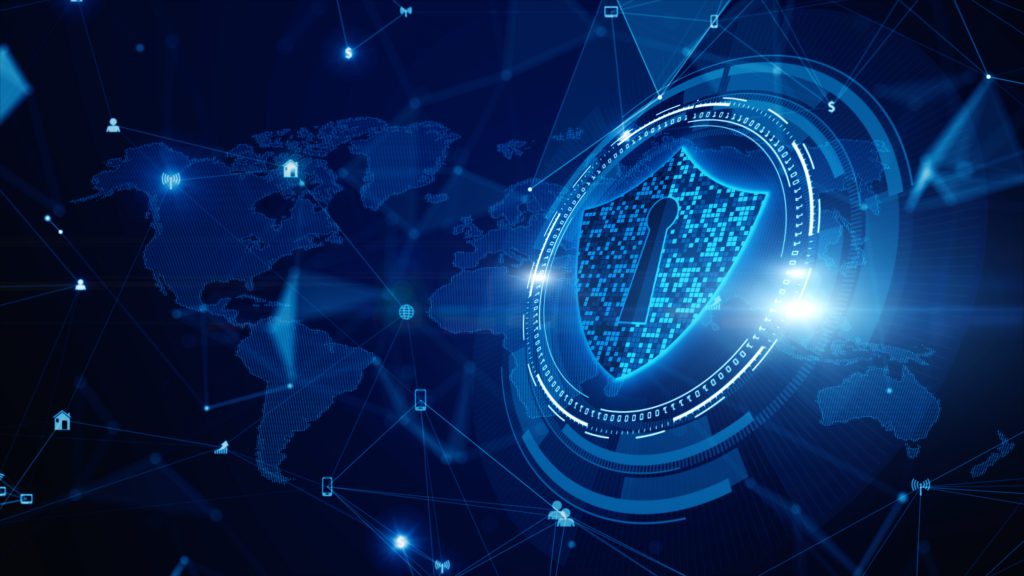Enterprises rely on the latest technologies and emerging digital solutions to stay relevant and be competitive in the digital transformation era. As these modern technologies are being implemented, new types of security threats & vulnerabilities are emerging, and several new security solutions need to be developed to protect the enterprise from these threats. Technology advancements such as Blockchain, Cloud, 5G, Artificial Intelligence, Big Data, IoT, Edge Computing, AR/VR, Decentralized Web (Web 3.0), etc., are making it complex to implement enterprise security.
As per a recent survey of global IT leaders regarding their preparedness in responding to the growing array of cyber threats, half (49%) of the respondents cited the growth in cloud and IoT as key challenges in protecting the enterprise against cyberthreats.
Multi-layered Security Approach
To address the rising security challenges and increasing threats, a “Multi-layered approach” is one of the best possible ways to view security systems implementation. The approach protects operations on multiple components or layers – Web and Network Security, Device and Application Security, and Physical Security.
Web & Network Security
Web and network security broadly covers creating policies and safeguarding all browsers, private networks, shared networks, and online user accounts. Network security involves the implementation of solutions (hardware and software), processes, configurations, and rules relating to network use, accessibility, and protection. While web security refers to the protective measures and protocols to protect the organization from cybercriminals and threats that use the web channel.
Device & Application Security
Device and application security broadly covers the software and procedures to secure computers, tablets, company phones, smart devices, applications, user software, and system programs. Device security focuses on providing a full range of practices for securing desktops, laptops, mobile devices, and other user equipment. While application security protects all kinds of applications (legacy, desktop, web, mobile, micro-services, etc.,) used by internal and external users including employees, partners, and customers.
Physical Security
Physical security may vary according to the industry, business model, and physical premises but the end goal of implementing the physical security is to provide protection of personnel, hardware, devices, software, networks, and data from the events that might cause severe physical damage to the organization. While implementing robust Web & Network Security and Device & Application security mechanisms are very important for the organization, preventing physical security breaches, attacks and threats is key to securing organization assets.
Essential Elements of Implementation
A “Multi-layered approach” as outlined above provides a direction for organizations to protect software & hardware assets, networks, devices, and applications. Several solutions need to be implemented across these layers for organizations to realize the key objectives of this approach. The essential elements of security implementation include – identity, data, network, communication, and database.
Identity
Identity and Access Management (IAM) is an essential part of a security strategy that helps organizations to maintain and manage digital identities and access to applications, data, systems, devices, and networks of an organization. IAM is a framework of policies, processes, and technologies that reduces identity-related threats and helps organizations adhere to identity-based compliance requirements.
Data
Data privacy and security are a set of processes and techniques for protecting data and digital information by appropriately encrypting, isolating, and handling sensitive information including Personally Identified Information (PII), confidential information related to finances, clients, IP, payments, etc., and other data items that are governed by the privacy regulations such as GDPR, CCPA, HIPAA, SOX, and PCI-DSS.
Network
Network security broadly consists of controlling access to physical network components, protecting access to the digital network, securing data-in-transit over the network, and defining policies/processes to control access for network administrators. Methods of securing the network include Network Access Control, Securing Ports, Malware Protection, Firewall Protection, VPNs, Instance Hardening, and DDoS Prevention.
Communication
Securing the communication between components in an application and between applications is a critical measure for protecting data being transmitted over internal and external networks. Key measures include ensuring HTTPS and TLS (Transport Layer Security)based secure communication, certificates management, and network access control.
Database
Database security broadly consists of securing the data being stored (data-at-rest) in the databases through masking, encryption, etc., managing access to the databases through access control lists, permissions, etc., controlling application-level access to databases, and, like any other digital entity, managing network-level access for the databases.
There are several other emerging essentials of implementation such as Cloud Security, Security Automation, Blockchain Security, etc. that are gaining traction based on the organization’s new digital applications landscape.
Security systems implementation example
Chainyard implemented a scalable, extensible, and reliable solution that addresses data, application, physical, system, and network security requirements for a blockchain-based supplier information management solution. This solution has been adopted by thousands of buyers in 20+ countries. Read more about this case study.
Contact us to speak to Chainyard’s subject matter experts in Enterprise Security.

